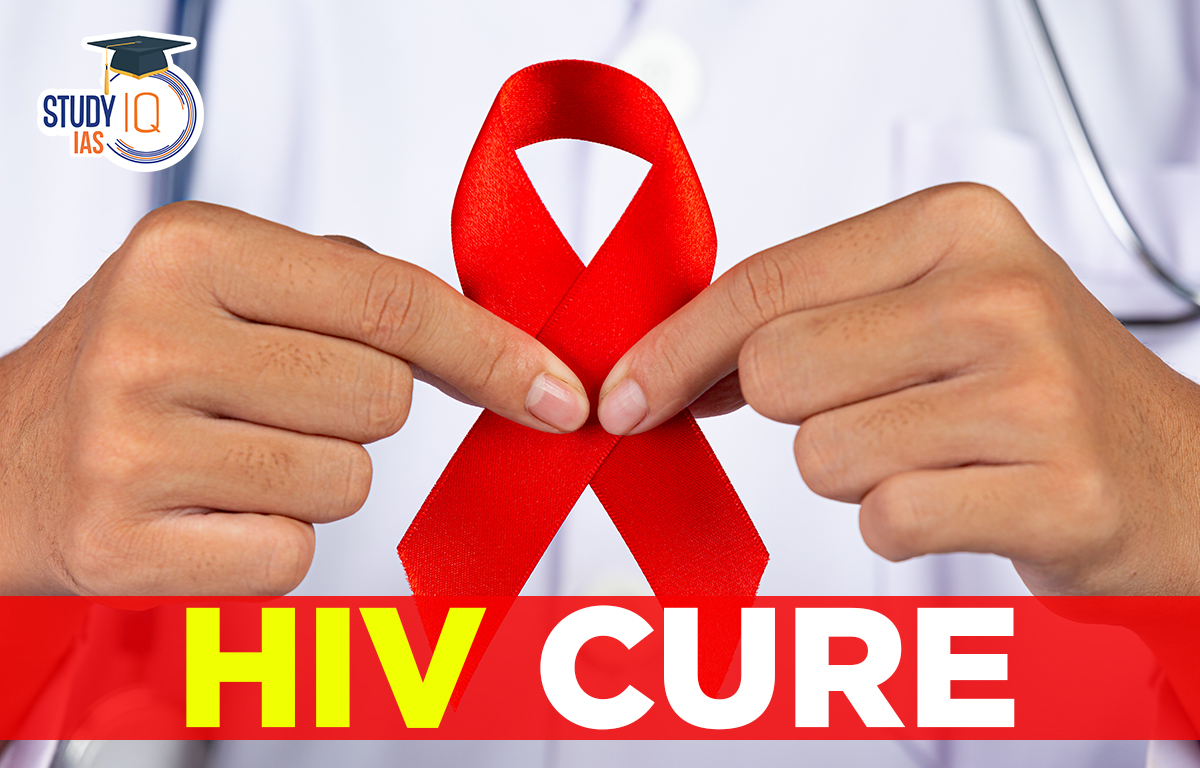Table of Contents
Context: A man from Germany has become the third person to have been cured of HIV.
More on News
- This was achieved with a bone-marrow transplant from people carrying a specific HIV-resistant genetic mutation.
- The doctors selected a donor carrying two copies of a CCR5-delta 32 genetic mutation – a mutation that is known to make the carriers almost immune to HIV.
- The virus was not detectable in the man’s body even four years after he stopped taking antiretroviral that controls the level of the virus in the body.
What is Human Immunodeficiency Virus (HIV)?
- HIV attacks CD4, a type of White Blood Cell (T cells) in the body’s immune system.
- T cells are those cells that move around the body detecting anomalies and infections in cells.
- After entering the body, HIV multiplies itself and destroys CD4 cells, thus severely damaging the human immune system.
- Once this virus enters the body, it can never be removed.
- The CD4 count of a person infected with HIV reduces significantly.
- In a healthy body, CD4 count is between 500- 1600, but in an infected body, it can go as low as 200.

What is CCR5 Mutation?
- HIV mainly attacks the CD4 immune cells in the human body, thereby reducing a person’s ability to fight off secondary infections.
- The CCR5 receptors on the surface of the CD4 immune cells act as a doorway for the HIV virus.
- However, the CCR5-delta 32 mutation prevents these receptors used by the HIV virus from forming on the surface, effectively removing the doorway.
- Only 1% of the people in the world carry two copies of the CCR5-delta 32 mutation, meaning they got it from both their parents and another 20% carry one copy of the mutation, mainly those of European descent.
- Those with the mutation hence are almost immune to the infection, although some cases have been reported.
How is HIV Treated?
- Anti-Retroviral Therapy: It is a combination of daily medications that stop the virus from reproducing.
- The therapy helps in protecting CD4 cells thus keeping the immune system strong enough to fight off the disease.
- It, besides reducing the risk of transmission of HIV, also helps in stopping its progression to AIDS (a spectrum of conditions caused by infection due to HIV).
- Vaccine: Although there is no vaccine for HIV, there are Pre-exposure prophylaxis (or PrEP) medicines that can be taken by people at high risk of contracting the infection.
- PrEP reduces the risk of getting HIV from sex by about 99%.
- Stem Cell Transplant: Under this, an infected person is treated with stem cell transplant from donors carrying a genetic mutation that prevents expression of an HIV receptor CCR5.
- CCR5 is the most commonly used receptor by HIV-1. People who have mutated copies of CCR5 are resistant to HIV-1 virus strain.
- In 2022, the transplant in a patient suffering from HIV in New York was done using a dual stem cell therapy.
- The process involved using stem cells from the umbilical cord of a neonate, complemented with stem cells from an adult that requires less restrictive HLA matching.
- This is important as it may help people from different races get transplants with CCR5-delta 32 mutation, which is naturally found mostly in Europeans.

What are Stem Cells?
- Stem cells are special cells that can make copies of themselves and change into the many different kinds of cells that the body needs. They have two unique properties that enable them to do this:
- They can divide over and over again to produce new cells.
- As they divide, they can change into the other types of cell that make up the body.
- There are several kinds of stem cells and they are found in different parts of the body at different times.
- Cancer and cancer treatment can damage the hematopoietic stem cells. Hematopoietic stem cells are stem cells that turn into blood cells.
Can Such transplants Solve the HIV Crisis?
- With the mutation existing in very few people and nearly 38.4 million people living with HIV across the world, it would be very difficult to find a matching donor in the first place.
- Add to that the fact that the mutation occurs mainly among Caucasians, and the donor pool shrinks further for many, especially those from countries with high HIV burden.
- However, even if donors were to become available, experts believe it is highly unlikely that bone marrow transplants can be rolled out for all those with HIV.
- This is because it is a major procedure with high risks associated, especially that of the person rejecting the donated marrow.
- There is also the likelihood of the virus mutating to enter the cells through other mechanisms in such persons.
Initiatives to Curb HIV
India:
- HIV and AIDS (Prevention & Control) Act, 2017: It is a central legislation protecting and promoting the rights of persons infected with and affected by HIV and AIDS.
- Its main objective is preventing and controlling the spread of HIV and AIDS and reinforcing the legal and human rights of persons infected with and affected by HIV and AIDS.
- It also seeks to protect the rights of healthcare providers.
- National AIDS and STD Control Programme: The Union Government has launched the National AIDS and STD Control Programme (NACP).
- It is a Central sector scheme.
- The NACP Phase-V will take the national AIDS and STD response till Financial Year 2025-26 towards the attainment of United Nations’ Sustainable Development Goals 3.3 of ending the HIV/AIDS epidemic as a public health threat by 2030.
- NACP offers a comprehensive package of prevention, detection and treatment services.
Global:
- UNAIDS: UNAIDS is the Joint United Nations Programme on HIV/AIDS.
- UNAIDS is an innovative joint venture of the United Nations family, which brings together the efforts and resources of 11 United Nations system organizations to unite the world against AIDS.
- These are: UNHCR, UNICEF, WFP, UNDP, UNFPA, UNODC, UN Women, ILO, UNESCO, WHO and the World Bank.
- UNAIDS is an innovative joint venture of the United Nations family, which brings together the efforts and resources of 11 United Nations system organizations to unite the world against AIDS.


 TNPSC Group 4 Admit Card 2025 Out at tnp...
TNPSC Group 4 Admit Card 2025 Out at tnp...
 Species Added to India's Flora and Fauna...
Species Added to India's Flora and Fauna...
 Daily Quiz 02 July 2025
Daily Quiz 02 July 2025





















